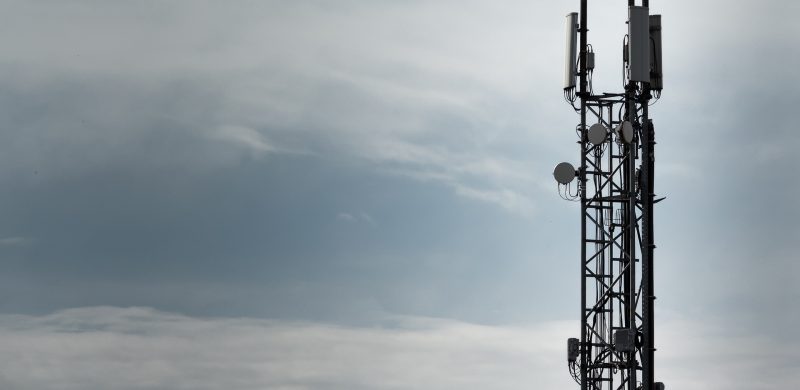
The most important thing to understand right now is that the standards for 5G have not been finalized yet “with 5G specifications unlikely to be finished before 2018 at the earliest, that means anything deployed before and around 2020 will be pre-specification and hence not guaranteed to be aligned with 5G.”
Qualcomm, one of the companies at the forefront of 5G research, echoes this view. “5G is all about breadth and diversity,” Matt Branda, Qualcomm’s Director of 5G Technical Marketing, told me. “5G is intended to be a unified design, using a mix of bands to deliver a more uniform experience.”
5G is going to be a huge improvement over current wireless network. Estimates suggest that it will be four to eight times better than 4G. The improvements won’t just be in speed: less congestion and lower latency also comes with 5G, just from improvements in coding and antennas.
Ultimately, the improvements from 5G shouldn’t just be faster and better internet — it should also be cheaper. 5G will lead to a lower cost-per-gigabyte for the wireless companies, which should mean cheaper cell plans, or truly unlimited mobile data.
The lower latency also opens a world of possibilities. With lower latency, applications like live-streaming VR or instant language translation will be possible, because of the speed devices can talk to servers in the cloud and transmit data.
Another good side-effect should be much more consistent coverage. T-Mobile recently filed a petition with the FCC that revealed what the average data speed is for customers, and it’s lower than you might imagine: nearly 25 percent of users don’t get a 10Mbps connection, even in urban areas. One of the key aims of 5G is to deliver a “more uniform experience” to the user, with the aim being that you’ll be able to get a 100Mbps connection anywhere. As noted above, low-band spectrum will be key to achieving that goal in rural areas, while mid-and-high-band spectrum will be needed to get that consistency in urban areas.
5G specs won’t be finished until 2018 at the earliest, and after that happens, manufacturers will still need to certify equipment for those new 5G specs. But in the interim, 4G LTE won’t stop being improved, and cell carriers are likely to start calling advanced LTE (LTE-A) 5G.
Before with the rollout of 4G: before deploying 4G across its network, T-Mobile deployed HSPA+, an advanced 3G technology that reached the speeds of 4G. T-Mobile called the tech 4G, because it figured the end user was getting the same experience with HSPA as “true” 4G.
There will be a gradual evolution from one to the other, unlike 4G which was a new radio technology in new frequency bands. Indeed, it will be hard to know when we have actually transitioned from 4G to 5G since I suspect they will blend so much into each other.”
Qualcomm shares the same view. In a blog post, Qualcomm Executive VP Cristiano R. Amon said that “Gigabit LTE, designed to deliver fiber-optic Internet speeds wirelessly, is giving us the first real glimpse into our 5G future. Gigabit LTE is designed to provide blazing fast speeds over wide geographic areas. That makes it suitable as the high-speed coverage layer that will provide a consistent experience on early 5G networks (in the same manner that mature generation 3G networks helped nascent 4G LTE networks). Gigabit LTE will be the anchor of the 5G mobile experience.”
Most of all, it’s worth remember that there’s no fixed 5G standard yet. With no standard, it’s impossible for one wireless company to claim to deliver “true” 5G. So instead, just remember to listen closely to what the networks are claiming, read the fine print, and remember that faster mobile internet is faster mobile internet — regardless of what number is attached.
The 5G networks being planned right now will operate in a high-frequency band of the wireless spectrum—between 30 GHz and 300 GHz, in what’s known as the millimeter wave spectrum. These millimeter waves can transfer heaps of data at very high speeds, but they don’t travel as far as the lower-frequency waves used in 4G networks. High-frequency millimeter waves also have difficulty getting around walls, buildings, and other obstacles.
On a lower-frequency network like 4G LTE, the antennas can be farther apart, and obstacles aren’t a big issue. When the 5G networks are built, the carriers will have to use more antennas—many more—to get the same coverage as our current networks. You’ll see mini-antennas basically everywhere.
That’s partly why some 5G participants, like Qualcomm and Intel, are experimenting also in the sub-6 GHz range, to supplement fickle millimeter wave signals with something more stable. Like everything else 5G, that’s still very much in the earliest of days.
Carriers in the US are targeting 2020 for widespread launch. That seems like a long wait, but it’s still an ambitious timeline—5G brings with it new antennas, new devices, and new applications for wireless data.
“Where you saw a growth in 4G was around data-centric, smartphone-centric use cases,” says Rob Topol, a general manager for Intel’s 5G business. “We’re looking beyond the smartphone for 5G.” In particular, that means categories like automotive, virtual reality, drones, and more should reap its benefits first.
On the hardware side, both Intel and Qualcomm have introduced 5G modems, as well as other pieces of infrastructure to support the various trials that will be rolling out this year.
Because it’s designed for a world in which tens of billions of gadgets depend on constant connectivity, 5G networks will be engineered to adapt to the needs of individual devices. If you’re streaming 4K video to a big-screen TV, it may prioritize sheer data throughput. If 5G serves as the connection between a controller and a drone, it may prioritize a quick response.
For mobile devices, 5G will purportedly fix many of the problems with 4G and existing wireless technologies. It’ll be designed to support many more concurrent users and devices, serving them all at higher speeds than 4G. The days of your data speeds slowing down because you’re at a crowded event are numbered.
The world seems to be advancing as Africa lags behind in terms of network infrastructure and development. We are yet to see what 2020 and beyond hold as 5G is perfected.
@nelson.madzima



